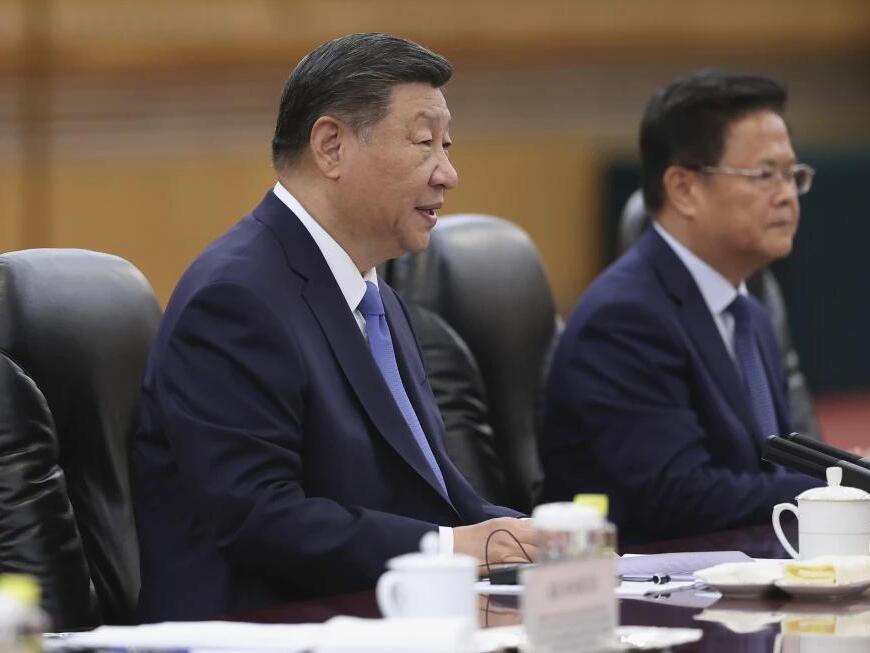Physical Address
304 North Cardinal St.
Dorchester Center, MA 02124
Physical Address
304 North Cardinal St.
Dorchester Center, MA 02124

On Wednesday, China conducted a test launch of an intercontinental ballistic missile (ICBM) into the Pacific Ocean, an event that has drawn attention due to its unusual nature and the heightened tensions in the region. This missile launch is particularly noteworthy against the backdrop of overlapping territorial disputes involving multiple countries, as well as the ongoing efforts by both China and the United States to assert their influence.
The missile test was described as part of regular training activities by the People’s Liberation Army’s Rocket Force, which oversees both conventional and nuclear missile operations. According to the Defense Ministry, the missile was not targeting any specific country and was armed with a dummy warhead, landing in a pre-established area of the ocean. The exact landing site, however, was not disclosed.
China has historically refrained from testing ICBMs in international waters, with the last recorded instance of such a launch dating back to May 1980. That test involved a DF-5 missile launched into the South Pacific. Typically, the PLA conducts missile tests in the remote Xinjiang region or over the Bohai Sea.
Experts interpret the decision to choose the Pacific for this test as a signal of China’s growing nuclear capabilities and a warning directed at the United States and its regional allies. Steve Tsang, the director of the SOAS China Institute in London, emphasized that the primary audience for this message is the U.S., as China is unlikely to confront European powers militarily.
This launch occurs just weeks ahead of a scheduled conversation between Chinese President Xi Jinping and U.S. President Joe Biden, amidst increasing security tensions involving U.S. allies such as Japan and the Philippines, as well as ongoing tensions with Taiwan—a territory that China considers to be its own.
In response to the missile launch, Taiwan’s Defense Ministry announced that it was closely monitoring the situation, which includes other Chinese military exercises underway in the region. The timing of the missile test coincides with the U.N. General Assembly meeting in New York, which many analysts see as a deliberate show of force.
Drew Thompson, a senior fellow at the S. Rajaratnam School of International Studies in Singapore and a former U.S. defense official, stated that the launch serves as a clear signal regarding China’s stance on international order. It suggests that China’s tolerance has limits and that it is ready to use its most powerful weapons as a deterrent against adversaries if necessary.
This missile test follows a series of high-profile corruption arrests within China’s rocket corps, raising questions about military integrity. Observers speculate that the launch may be intended to reassure the Chinese public and signal to the international community that any internal issues have been addressed.
China maintains the largest standing army and navy in the world and has the second highest military budget globally, following that of the United States. Recent reports have indicated that China possesses the largest air force in the Indo-Pacific region, with a significant portion of its aircraft classified as fourth or fifth-generation models. The nation boasts a formidable array of weaponry, including a vast missile stockpile, stealth aircraft, nuclear-capable bombers, advanced surface ships, and nuclear submarines.
Under Xi Jinping’s leadership, significant strides have been made in modernizing the armed forces. Investments have been directed toward high-tech military capabilities from stealth fighters to aircraft carriers, contributing to a growing nuclear arsenal. Since 2015, China’s defense budget has more than doubled, even amid slowing economic growth.
A report from the U.S. Department of Defense noted that China is continuously enhancing the capabilities of the PLA to “fight and win wars against a strong enemy.” As of May 2023, estimates suggest China possesses over 500 operational nuclear warheads, with projections indicating an increase to more than 1,000 by 2030.
In comparison, Russia is reported to have over 5,580 nuclear warheads—4,380 of which are allocated for operational forces—while the United States has around 5,044 warheads in its arsenal according to the Federation of American Scientists.
Missile tests among nations with access to ICBMs are generally confined to their own territories. North Korea has conducted numerous ICBM tests since 2017, while the United States also conducted tests earlier this year, firing unarmed ICBMs from California to a designated test site in the Marshall Islands.
As the geopolitical landscape continues to shift, the implications of China’s missile test are being carefully analyzed by international observers and regional powers.
Source: Associated Press



